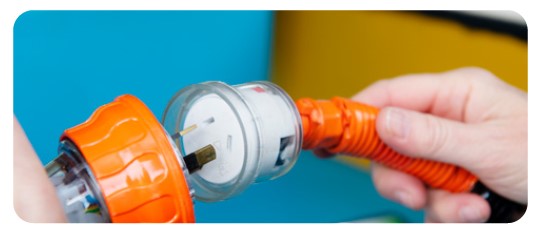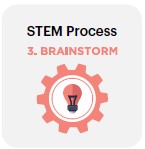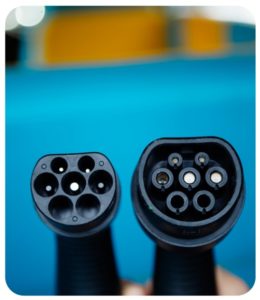
Inquiry question 3:
What design approach is more efficient at moving a model Kombi 20 metres?
 6.3 Electronics
6.3 Electronics
Students learn about:
- energy sources
- motors
- electric vehicles
- motion
Students learn to:
- Identify and describe a range of energy sources including renewables and non-renewables
- Utilise electric motors to develop a project related to motion
- Select and use a range of components and hardware in the development and production of a practical project related to motion
Lesson 7:
 Video 3.7.1: The Engineering And technology Design Process Students consider how to approach STEM design challenge using the example of the Kombi Project.
Video 3.7.1: The Engineering And technology Design Process Students consider how to approach STEM design challenge using the example of the Kombi Project.
Student Design Challenge: Students are given the challenge that will span the remaining duration of the unit. This is the initial lesson where the teacher presents the information.
- Design and create a cardboard Kombi vehicle powered from a renewable energy source and travel 20 metres distance.
- Use the solar care challenge to assist and model this activity.
Report: Students are to write up an evaluation report of their findings for submission (assessment 1).
Two design challenge categories: Students to choose from either:
- Using a method to transfer energy from the motor to the wheels (see video 3.7.2 and video 3.7.3), or
- Using a method of producing forward motion using the movement of air (see video 3.7.4).
Whole class brainstorm: Before the design work begins, students consider the design success criteria: What is the success criteria? What will be the measure of if the prototype is successful? Class decide on a collective set of design criteria to guide, development and evaluate the projects e.g., students are to work
in pairs.
Video 3.7.5: Meet The Makers: Students to consider the benefits of retrofitting an old car with new technology.
Resources
Video 3.7.1: The Engineering And Technology Design Process Andy Naughton, the Engineer responsible for the Electric Kombi Conversion, discusses the design process that he utilised in converting the Kombi from diesel to electricity (stop @ 2:25min).
Design challenge: Solar car challenge set the parameters for the challenge with the students. It is not only about speed!
Solar circuit charger: such as garden lights – this would be used to drive the vehicle.
Example of Cardboard Kombi template
Video 3.7.2. Energy transfer example 1: Energy transfer from a motor to a wheel using gears: measuring the RPM of a Lego wheel under different situations.
Video 3.7.3. Energy transfer example 2: Energy transfer from a motor to a wheel using voltage and polarity. Teachers may need to explain what is happening here.
Video 3.7.4. Energy transfer example 3: Energy transfer from potential electrical energy to kinetic energy: making ‘toys from trash’ using the movement of air.
Video 3.7.5: Meet The Makers Andy Naughton, the Engineer responsible for the Electric Kombi Conversion, and Southern Cross Engineering Student, Max Den Exter discuss the influences on his career path and the Kombi project including the benefits of converting old cars with new technologies.
Lessons 8 & 9:
 Learning intention: Students are taught about electricity and how motion can be created using electronic components.
Learning intention: Students are taught about electricity and how motion can be created using electronic components.
Teacher demonstration: Electron Flow. Using a battery energy source and an LED or a buzzer, and a motor. Demonstrate how electron flow is evidenced in light, sound and or movement (see resources).
Key Questions:
- What impact does voltage have on electron flow?
- What happens to the motor when the polarity is changed?
Video 3.8.1: The Batteries Used In An Electric Vehicle. Students consider the role of the battery in an electric vehicle.
 Video 3.8.2: Students consider the issues and impacts of electric vehicles through their use of batteries.
Video 3.8.2: Students consider the issues and impacts of electric vehicles through their use of batteries.
Teacher demonstration: how electrons can be ‘controlled’ using components. Teacher introduces resistors and variable resistors (potentiometer).
Key Questions:
- What happens when the resistance is increased?
- How does this differ from using gears to control speed?
Student Activity: Students to undertake the demonstrated electronic activities that demonstrate the flow of electrons and how these can be used to create light, cause motion, and control speed (see resources list).
Teacher Demonstration: Teacher demonstrates fault finding processes on a simple circuit.
Student Activities: Teacher demonstrates fault finding processes on a simple circuit.
- Students to demonstrate their knowledge in circuit fault finding challenges on TinkerCAD.
- Students to begin their challenge to perform a specific motion task with 3V battery and components as discussed in the previous lesson.
Video 3.8.3: Watch the video to think about how an engine works. For homework, think about how an electric motor could be used to power a car.
Resources
Teacher Demonstration Resources
- Energy source: 3V and 9V batteries
- Switches slide / momentary switches
- Motors
- Gears
- LEDS
- Resistors
- Variable resistors
- Capacitators
- Fans
- Multimeters
Video 3.8.1: The Batteries Used In An Electric Vehicle Erich Wittstock, Technical and Laboratory Manager at Southern Cross University, and Andy Naughton, engineering alumni from Southern Cross University, discuss the different types of batteries used in devices compared to the Kombi.
Video 3.8.2: A comical take on the situation with batteries in electric vehicles.
Student Activity Resources
- Energy source: 3V batteries.
- Switches slide / momentary switches.
- Motors
- Gears
- LEDS
- Resistors
- Variable resistors
- Capacitators
- Fans

